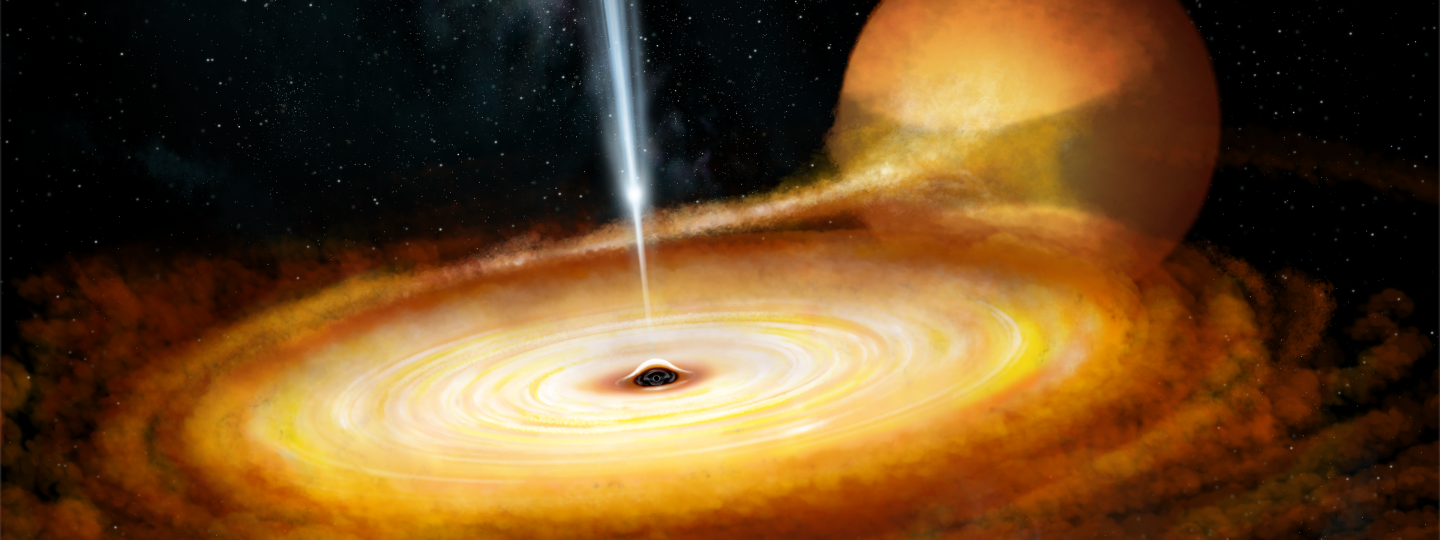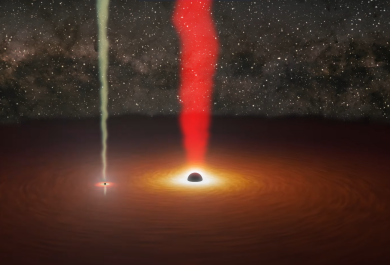An international team of astronomers has used the optical HiPERCAM camera of the Gran Telescopio Canarias in La Palma and NASA’s NICER X-ray observatory aboard the International Space Station to create a video of a growing black hole system at an unprecedented level of detail. The study has increased scientific understanding on the immediate surroundings of black holes.
Black holes can feed off a nearby star and create vast accretion discs of material around it. The effect of the black hole’s strong gravity and the magnetic field can cause the whole system to emit radiation with very rapid variations.
The black hole system MAXI J1820+070 that was studied by researchers from the University of Turku and the University of Southampton was first discovered in early 2018.
– The black hole in question is only about 10,000 light years away, in our own Milky Way. It weighs the equivalent of about seven Suns, and this gigantic mass collapsed down to a region of space smaller than 50km, says Postdoctoral Researcher Alexandra Veledina from the University of Turku.
Studying such systems is usually extremely difficult due to their distant locations. However, the HiPERCAM and NICER instruments let the researchers record the changing light from the system at over three hundred frames per second. With the help of an artist’s modelling, these frames can be used to create a video in which also the strong flares of X-ray can be seen in detail.
– Real data was used to make the video, but velocity was reduced to a tenth of its true velocity to allow the quickest flares to be detected by the human eye. Some of the flares only last for milliseconds, says Veledina.
Veledina participated in the study led by the University of Southampton. Veledina works as a Postdoctoral Researcher in the high-energy astrophysics research group at the University of Turku led by Professor Juri Poutanen.
Study Increases Understanding on Black Holes
Researchers also found that dips in X-ray levels are accompanied by a rise in visible light. The fastest flashes in visible light were found to emerge a fraction of a second after X-rays. Researchers have managed to observe the phenomenon twice before, but never at this level of detail.
According to Doctoral Candidate at the University of Southampton John Paice, who is also the main author of the article, the fact that researchers have now seen the emergence of light in three systems strengthens the notion that it is a common characteristic of growing black holes.
– If this is true, it may be telling us something basic about the working of the flows of matter around these intriguing cosmic objects, says Paice.
Understanding the physics and the nature of these flows of matter around black holes is a hot topic in astrophysics research. The research group led by Professor Juri Poutanen has been at the forefront of theoretical and observational studies on these gaseous flows already for years. For example, Veledina has been Principal Investigator of a similar study of black hole Swift J1753.5−0127 using Hubble Space Telescope and the European Space Agency’s XMM-Newton X-ray satellite.
– Understanding the processes operating close to the event horizon of black hole requires studies not only covering different spectral regions, such as optical and X-rays, but also instruments capable of doing observations with high time resolution. HiPERCAM and NASA’s NICER enable such studies, says Veledina.





